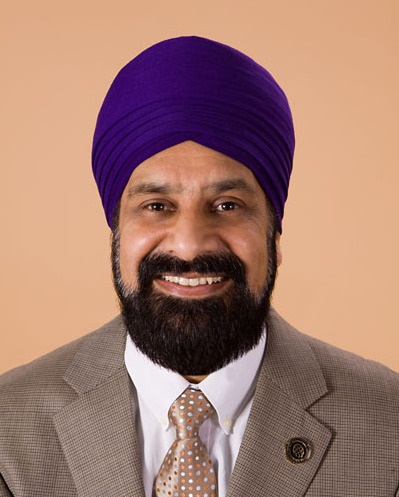Scientific Program

Dave Singh
President of Vivos BioTechnologies Inc, USA
Title: Long term follow up of non-surgical upper airway remodeling for obstructive sleep apnea: Case report
Biography:
Professor Dave Singh is a US citizen who was born, educated and trained in England, UK. He holds three doctorates, including Doctor of Dental Medicine; a Ph.D. in Craniofacial Development, and a D.D.Sc. in Orthodontics. He was invited to relocate to the Center for Craniofacial Disorders, USA on the basis of being an “outstanding professor”, where he led a NIH-funded program of craniofacial research, focusing on cleft lip and palate and other craniofacial anomalies. Currently, he is a member of the American Sleep and Breathing Association, World Sleep Federation, an Academic Fellow of the World Federation of Orthodontists, and Fellow of the International Association for Orthodontics, where he was awarded prizes in 2005, 2013 and 2014. Dr. Singh holds several patents in the USA, Canada and Europe as well as international patents. He has published more than 200 articles and books in the peer-reviewed medical, dental and orthodontic literature, and has lectured in Australia, Asia, Europe, Africa and North America. Presently, Dr. Singh is President of Vivos BioTechnologies, Inc.
Abstract
In this study, we investigated long-term changes in upper airway morphology to test the hypothesis that the upper airway can be non-surgically remodeled over time in adult patients diagnosed with obstructive sleep apnea (OSA).
After obtaining informed consent, we undertook a 3D cone-beam (CBCT) scan of a 56-year-old male patient, who had been diagnosed with OSA by a sleep specialist prior to treatment. The patient was treated using a FDA-cleared, biomimetic oral device (DNA appliance®), which provided midfacial redevelopment in combination with mandibular repositioning. The patient wore the device for about 12-16hrs per day, and the overall treatment time was 18 months approx. During this time, the device was adjusted every 4-6 weeks to maintain its efficacy. Volumetric 3D reconstruction of the upper airway from the CBCT scan was undertaken prior to treatment, and the patient was monitored with a follow up CBCT scan 5.5yrs later, which was analyzed in the same way. All CBCT scan measurements were taken with no device in the patient’s mouth during wakefulness.
The CBCT scan analysis revealed that the minimum distance of the inferior turbinate from the nasal septum increased on the right side from 1.1mm to 2.5mm; and on the left side from 1.4mm to 2mm. Similarly, the surface area of the posterior nasal apertures at the level of the posterior nasal spine in the coronal plane increased from 487.5mm2 to 569mm2. The minimum transpalatal bone width also increased from 37mm to 41.5mm, while the medio-lateral retropalatal airway width increased from 4.5mm to 29mm; and the minimal antero-posterior retropalatal distance increased from 1.5mm to 11mm in the mid-sagittal plane. Therefore, the minimum cross-sectional retropalatal airway area increased from 67mm2 to 477.5mm2. In addition, the minimum antero-posterior retroglossal distance increased from 6mm to 17mm in the mid-sagittal plane; the minimum medio-lateral retroglossal width increased from 14.5mm to 26.5mm in the coronal plane, and subsequently the minimum retroglossal area in the axial plane at the same level as above increased from 83.5mm2 to 423.5mm2. Overall, the results showed that the upper airway volume increased from 13.9cm3 to 29.2cm3 over a period of 5.5yrs with no device in the patient’s mouth when the measurements were taken.
This biomimetic device and novel protocol has previously been used to treat OSA in the short term. Specifically, the device has been shown to increase midfacial bone volume and nasal airway volume in adult patients. In fact, it appears to have successfully treated OSA in adults since no appliance was in the mouth when the sleep studies were performed. We conclude that biomimetic oral appliance therapy may be able to non-surgically remodel the upper airway in adult patients diagnosed with OSA, and may represent an anti-aging protocol that might maintain upper airway integrity and functionality as a patient undergoes aging. Further studies are required to corroborate the current findings.
- Oral medicine
- Diagnosis and Prevention of Oral Disease
- Oral and Maxillofacial Surgery
- Orthodontics and Dental Implants
- Prosthodontics
- Oral and Dental Health
- Periodontics and Oral Hygiene
- Restorative Dentistry and Endodontic
- Cosmetic Dentistry
- Oral Oncology
- Dental Public Health and community dentistry
- Radiology
- Focal infection
- Diabetes and Periodontal disease
- Bi-Digital O-Ring Test (BDORT)
- Dementia and Denture
- Skin care, metal allergies around oral area
- Sports dentistry
- Occlusal treatment
- Electromagnetic waves and dentistry

